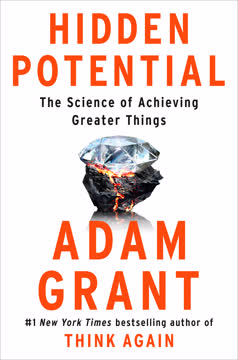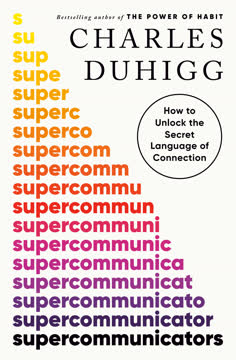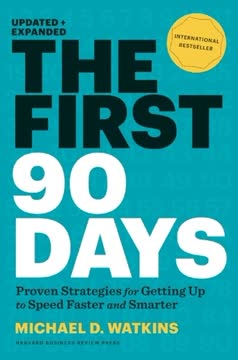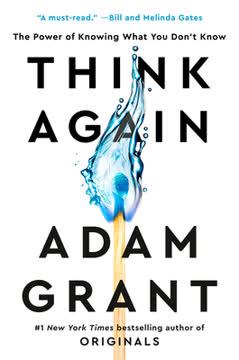重点摘要
1. 广告的双重性质:推销与诱惑
有强有力的论据表明,广告主要不是理性说服的问题,它以观众常常不完全意识到的方式起作用,它比争论、教育或转化更有效地强化、推动、吸引或诱惑。
理性与情感诉求。 广告历来通过两种主要视角来看待:推销和诱惑。推销模式强调理性说服,关注产品的好处和逻辑论据。相反,诱惑模式则认识到情感诉求、潜意识影响和非语言交流的力量。
互补的方法。 这两种方法并不是互相排斥的,往往是协同工作的。有效的广告活动通常结合理性说服和情感诉求的元素,创造出在多个层面上与消费者产生共鸣的引人注目的信息。
-
推销元素:
- 产品特性和好处
- 逻辑论据
- 事实信息
-
诱惑元素:
- 情感诉求
- 视觉象征
- 非语言提示
2. 广告理论的演变:从霍普金斯到里夫斯
广告理论并不是从霍普金斯开始的:如果有的话,他的粗暴简化和随后的巨大影响实际上关闭了一个更有趣的对话,就像四十年后里夫斯再次做的那样。
早期影响者。 广告理论的演变受到克劳德·霍普金斯、约翰·E·肯尼迪和罗瑟·里夫斯等关键人物的影响。他们的思想奠定了现代广告实践的基础,强调了“理由”和“独特销售主张”(USP)等概念。
范式转变。 随着广告的发展,理论从单纯关注理性论据转向结合心理学见解和情感诉求。这一进展反映了对消费者行为和决策过程的日益理解。
- 广告演变中的关键概念:
- 印刷推销术(肯尼迪)
- 科学广告(霍普金斯)
- 独特销售主张(里夫斯)
- AIDA模型(注意、兴趣、欲望、行动)
3. 广告中潜意识影响的力量
我们不断在不同的感知和不同的经验之间建立心理联系,而大多数情况下我们是无意识地进行的。
心理学见解。 广告中潜意识影响的概念大量借鉴了心理学理论和研究。它认识到消费者往往不知道影响他们购买决策和品牌偏好的因素。
联想和象征。 广告商利用联想和象征的力量,在品牌和消费者之间建立情感联系。这些潜意识的联系在塑造消费者行为方面可能比理性论据更有影响力。
- 潜意识影响的关键元素:
- 视觉象征
- 情感联想
- 非语言提示
- 隐性记忆和学习
4. 品牌显著性和单纯曝光的重要性
仅仅让一个品牌更有名就能推动销售。
顶级意识。 品牌显著性指的是品牌被消费者注意、识别和记住的程度。研究表明,仅仅增加品牌的可见性和熟悉度,即使没有明确传达产品好处,也能显著影响销售。
单纯曝光效应。 单纯曝光效应是一种心理现象,表明人们往往会对他们经常接触的事物产生偏好。这一原则强调了持续广告和品牌市场存在的价值。
- 影响品牌显著性的因素:
- 持续广告
- 市场中的声音份额
- 独特的品牌资产(标志、广告歌等)
- 曝光频率
5. 广告作为社会连接和关系建立
这个品牌的背景之一是他们在保险主要通过经纪人购买的时候推出的——经纪人是家庭会有个人关系的人。这次活动从一开始就做对了一件重要的事情,那就是与一个直接销售的品牌建立了类似的友好关系。
建立关系。 有效的广告不仅仅是传达信息;它还寻求在品牌和消费者之间建立和培养关系。这种方法认识到消费者往往基于情感联系和感知到的共同价值观选择品牌。
传播理论。 借鉴传播理论,特别是保罗·瓦茨拉维克的工作,广告可以被理解为品牌和消费者之间的持续对话。这一视角强调了语气、背景和非语言元素在塑造品牌认知中的重要性。
- 广告中关系建立的关键方面:
- 一致的品牌声音和个性
- 情感参与
- 双向沟通(尤其是在数字渠道中)
- 创造共同的体验和价值观
6. 公共关系在塑造现实中的作用
伯奈斯从未认为自己在掩盖真相;他认为自己在塑造真相。
框架叙事。 公共关系与广告密切相关,在塑造公众认知和构建共享现实方面起着至关重要的作用。像爱德华·伯奈斯这样的公关从业者理解框架问题和事件以影响公众舆论的力量。
间接影响。 与直接广告不同,公关通常在幕后工作,创造新闻事件,塑造叙事,影响意见领袖。这种方法可以更微妙,并且在塑造长期认知方面可能更有效。
- 公关塑造现实的策略:
- 创造有新闻价值的事件
- 影响意见领袖
- 框架问题和辩论
- 管理危机沟通
7. 哗众取宠与表演艺术:被忽视的广告艺术
哗众取宠的原则与广告界最成功的许多事物惊人地契合。
奇观的力量。 借鉴P.T.巴纳姆等表演者的灵感,广告中的“哗众取宠”概念强调了奇观、吸引注意力的策略和创意风格的重要性。这种方法认识到,有时最有效的广告是那些娱乐和吸引观众的广告。
平衡艺术。 虽然现代广告往往追求尊重和科学有效性,但表演艺术和哗众取宠的原则仍然相关。成功的广告活动通常在事实信息和创意、吸引注意力的元素之间取得平衡。
- 广告中哗众取宠和表演艺术的元素:
- 大胆、吸引注意力的策略
- 创意故事讲述
- 意想不到或有争议的方法
- 难忘的奇观或事件
最后更新日期:
FAQ
What's "The Anatomy of Humbug" about?
- Exploration of Advertising Theories: "The Anatomy of Humbug" by Paul Feldwick explores various theories and models of advertising, challenging the conventional wisdom about how advertising works.
- Historical Perspective: The book delves into the history of advertising thought, examining how past beliefs and practices continue to influence current advertising strategies.
- Critical Analysis: Feldwick critically analyzes the assumptions and narratives that have shaped the advertising industry, such as the Enlightenment, Golden Age, and Year Zero narratives.
- Practical Implications: The book aims to provide practical insights by understanding the historical roots of advertising assumptions, encouraging readers to think differently about advertising.
Why should I read "The Anatomy of Humbug"?
- Broaden Understanding: It offers a comprehensive overview of advertising theories, helping readers understand the complexity and diversity of advertising practices.
- Challenge Assumptions: The book encourages readers to question and critically assess the commonly held beliefs about how advertising works.
- Practical Insights: By exploring historical and contemporary advertising practices, the book provides valuable insights that can be applied to modern advertising challenges.
- Engaging Narrative: Feldwick's engaging writing style and use of historical anecdotes make the book both informative and enjoyable to read.
What are the key takeaways of "The Anatomy of Humbug"?
- Multiple Theories: Advertising is not governed by a single theory; multiple models like salesmanship, seduction, and showmanship coexist and offer different perspectives.
- Historical Influence: The past narratives and practices in advertising continue to shape current beliefs and strategies, often unconsciously.
- Critical Thinking: Understanding the historical context of advertising theories can free practitioners from being slaves to outdated assumptions.
- Diverse Approaches: Effective advertising can be achieved through various approaches, including rational persuasion, emotional appeal, and creating brand salience.
What are the best quotes from "The Anatomy of Humbug" and what do they mean?
- "Ideas we have, and do not know we have, have us." This quote emphasizes the unconscious influence of ingrained ideas and assumptions on our thinking and actions.
- "Advertising is the art of getting a unique selling proposition into the heads of the most people at the lowest possible cost." This reflects Rosser Reeves's belief in the power of a single, memorable message in advertising.
- "The role of advertising is not so much to increase sales, as to increase saleability." This suggests that advertising's primary function is to enhance a brand's attractiveness and desirability, rather than directly driving sales.
- "Persuasion isn’t a science, it’s an art." Bill Bernbach's quote highlights the creative and intuitive aspects of advertising, challenging the notion that it can be reduced to a set of scientific rules.
How does Paul Feldwick define "Humbug" in advertising?
- Showmanship and Spectacle: Feldwick draws on P.T. Barnum's concept of "humbug," which involves using showmanship and spectacle to attract attention and engage audiences.
- Beyond Deception: Humbug is not about deceit but about creating a compelling and entertaining experience that captures public interest.
- Value in Entertainment: The idea is that advertising, like humbug, should provide value through entertainment and engagement, rather than just factual persuasion.
- Relevance to Advertising: Feldwick suggests that successful advertising often involves elements of humbug, using creativity and flair to make brands memorable.
What are the main advertising narratives discussed in "The Anatomy of Humbug"?
- The Enlightenment Narrative: This narrative suggests that advertising has evolved from primitive practices to a more scientific and rational approach.
- The Golden Age Narrative: It romanticizes a past era of advertising as a time of creativity and effectiveness, often seen as superior to current practices.
- The Year Zero Narrative: This perspective argues that the world has changed so much that past advertising practices are now irrelevant.
- Critique of Narratives: Feldwick critiques these narratives, showing how they oversimplify the history and complexity of advertising.
How does "The Anatomy of Humbug" challenge the concept of the Unique Selling Proposition (USP)?
- Reeves's Influence: The book examines Rosser Reeves's concept of the USP, which emphasizes a single, memorable message in advertising.
- Questioning Effectiveness: Feldwick questions the effectiveness of the USP, suggesting that it oversimplifies how advertising works.
- Diverse Approaches: He argues that successful advertising often involves multiple messages and emotional appeals, not just a single proposition.
- Historical Context: The book places the USP within the broader historical context of advertising theories, showing its limitations.
What role does "seduction" play in advertising according to "The Anatomy of Humbug"?
- Emotional Appeal: Seduction in advertising involves appealing to emotions and subconscious desires rather than just rational arguments.
- Historical Roots: The book traces the history of seduction in advertising, highlighting figures like Ernest Dichter who emphasized psychological motivations.
- Modern Relevance: Feldwick discusses how modern advertising continues to use seduction through imagery, symbolism, and emotional storytelling.
- Complement to Persuasion: Seduction is presented as a complement to rational persuasion, offering a different but equally important approach to influencing consumers.
How does "The Anatomy of Humbug" address the concept of "salience" in advertising?
- Brand Visibility: Salience refers to the prominence and visibility of a brand in consumers' minds, making it more likely to be chosen.
- Ehrenberg-Bass Institute: The book discusses the work of the Ehrenberg-Bass Institute, which emphasizes the importance of brand salience over differentiation.
- Fame and Publicity: Feldwick highlights the role of advertising in creating brand fame and maintaining top-of-mind awareness.
- Practical Implications: The concept of salience challenges traditional views of advertising, suggesting that being memorable and ubiquitous can be more effective than detailed persuasion.
What is the significance of "relationship" in advertising as discussed in "The Anatomy of Humbug"?
- Beyond Transactions: Advertising is not just about transactions but about building and maintaining relationships between brands and consumers.
- Watzlawick's Influence: Feldwick draws on Paul Watzlawick's communication theory, emphasizing the relational aspects of advertising.
- Analogic Communication: The book highlights the importance of non-verbal, analogic communication in shaping consumer-brand relationships.
- Long-term Engagement: Building a strong relationship with consumers can lead to long-term brand loyalty and engagement.
How does "The Anatomy of Humbug" view the role of public relations in advertising?
- Shared Reality: Advertising and public relations both play a role in constructing a shared reality and shaping public perceptions.
- Edward Bernays's Influence: The book discusses Edward Bernays's contributions to PR, emphasizing the power of storytelling and framing.
- Invisible Influence: PR often works behind the scenes, influencing public opinion without overt persuasion, a concept applicable to advertising.
- Complementary Roles: Advertising and PR are seen as complementary, with advertising providing visibility and PR shaping the narrative.
How does "The Anatomy of Humbug" relate advertising to showmanship?
- P.T. Barnum's Legacy: Feldwick draws parallels between advertising and P.T. Barnum's showmanship, emphasizing entertainment and spectacle.
- Humbug as Strategy: Showmanship involves using creativity and flair to capture attention and engage audiences, akin to Barnum's "humbug."
- Beyond Science and Art: Advertising is positioned as a blend of science, art, and showmanship, using various elements to create impact.
- Practical Application: The book suggests that embracing showmanship can lead to more memorable and effective advertising campaigns.
评论
《The Anatomy of Humbug》被广泛赞誉为一部洞察广告理论历史的著作。读者们欣赏费尔德威克对不同思想流派的批判性分析,从推销术到诱惑术。该书挑战了行业假设,并为现代辩论提供了历史背景。许多人认为这是广告专业人士必读的书,提供了对各种方法的平衡视角。一些读者指出书中缺乏实用建议或实例,但大多数人重视书中发人深省的内容和清晰的写作风格。总体而言,这本书被认为是对广告过去和现在的清新且富有启发性的审视。
Similar Books














